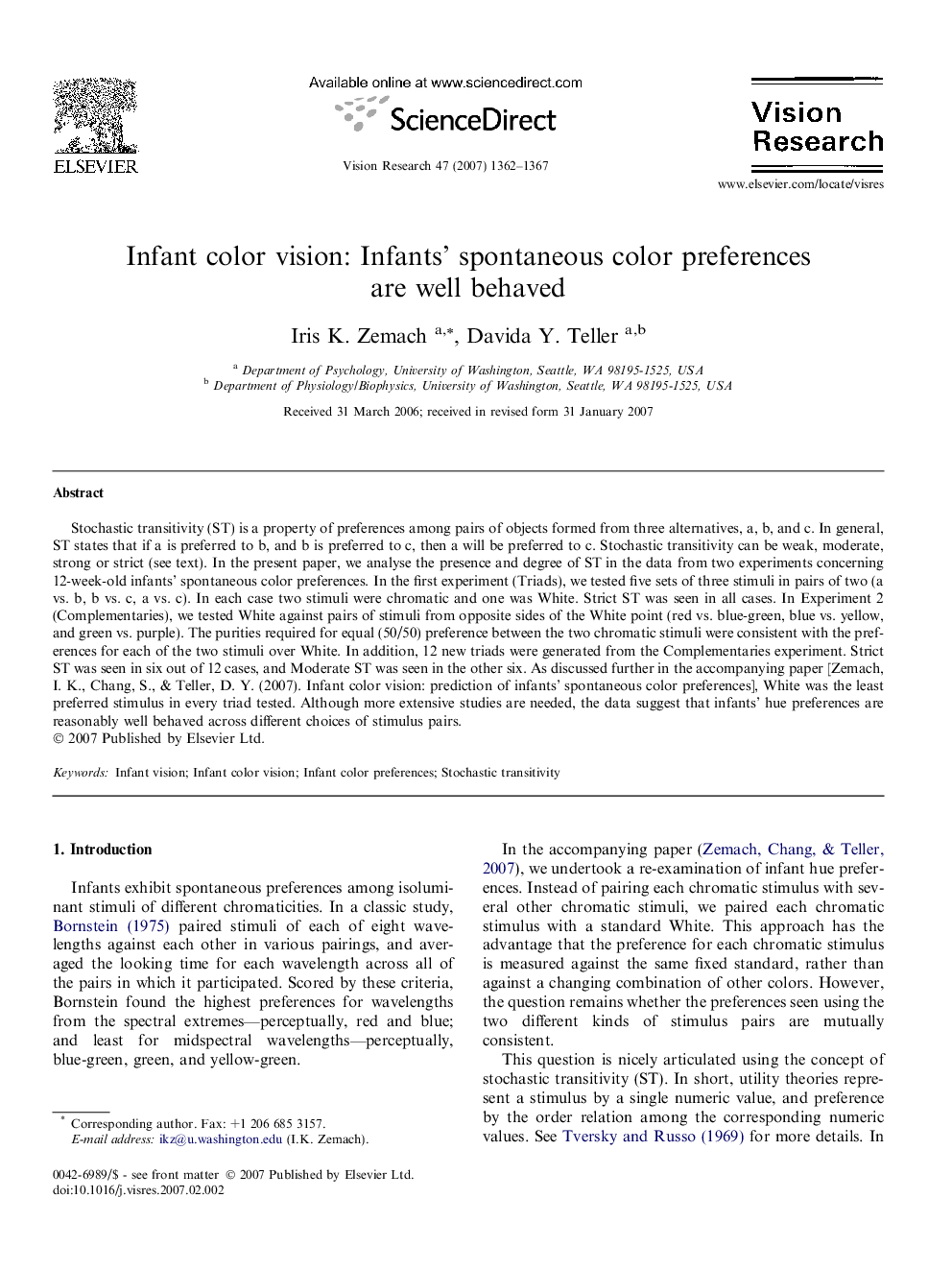| Article ID | Journal | Published Year | Pages | File Type |
|---|---|---|---|---|
| 4036326 | Vision Research | 2007 | 6 Pages |
Stochastic transitivity (ST) is a property of preferences among pairs of objects formed from three alternatives, a, b, and c. In general, ST states that if a is preferred to b, and b is preferred to c, then a will be preferred to c. Stochastic transitivity can be weak, moderate, strong or strict (see text). In the present paper, we analyse the presence and degree of ST in the data from two experiments concerning 12-week-old infants’ spontaneous color preferences. In the first experiment (Triads), we tested five sets of three stimuli in pairs of two (a vs. b, b vs. c, a vs. c). In each case two stimuli were chromatic and one was White. Strict ST was seen in all cases. In Experiment 2 (Complementaries), we tested White against pairs of stimuli from opposite sides of the White point (red vs. blue-green, blue vs. yellow, and green vs. purple). The purities required for equal (50/50) preference between the two chromatic stimuli were consistent with the preferences for each of the two stimuli over White. In addition, 12 new triads were generated from the Complementaries experiment. Strict ST was seen in six out of 12 cases, and Moderate ST was seen in the other six. As discussed further in the accompanying paper [Zemach, I. K., Chang, S., & Teller, D. Y. (2007). Infant color vision: prediction of infants’ spontaneous color preferences], White was the least preferred stimulus in every triad tested. Although more extensive studies are needed, the data suggest that infants’ hue preferences are reasonably well behaved across different choices of stimulus pairs.
